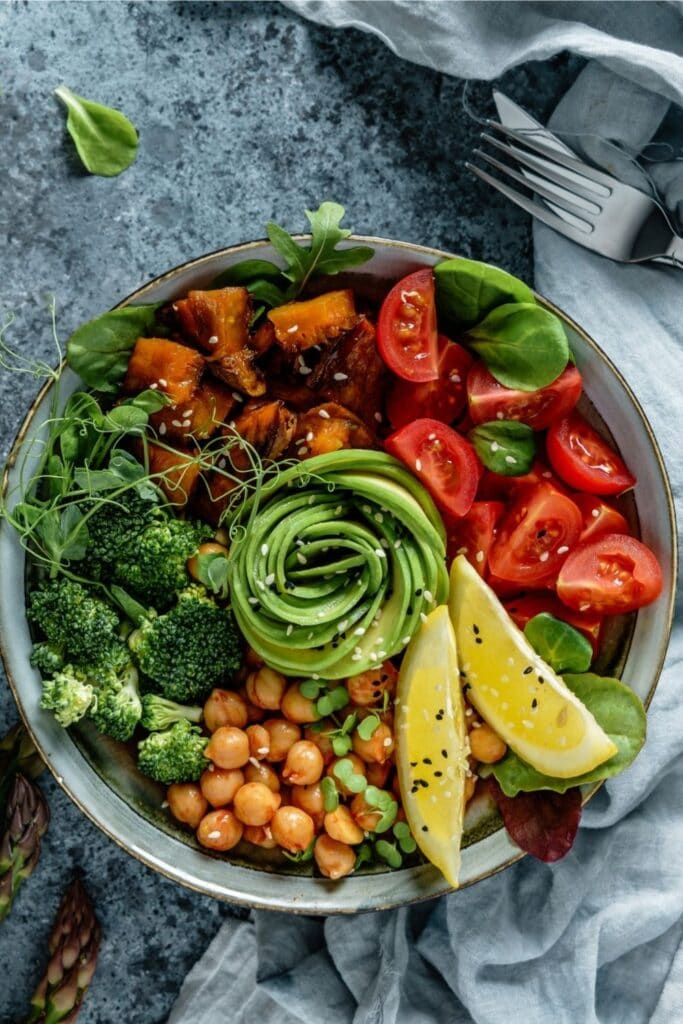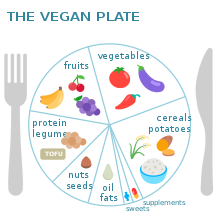
How do vegans get their protein? There are many excellent plant-based sources to protein such as lentils, beans, soy, lentils and tofu. Protein powders are also available. Add a teaspoon of powder to your smoothie, if you don’t feel the need for a full meal. There are also many vegan meat alternatives, such as seitan and tofu. These sources of protein include essential amino acids.
Plant-based sources
Although vegans and vegetarians do not suffer from protein deficiency, it's possible to boost your intake. To do so, consider consuming a wide variety of plant-based proteins. Seitan (made from wheat flour) has 25 grams per 100g of protein. It has all nine essential amino acids, and it pairs well with legumes. Seitan is also a great source of iron and selenium.
Plant-based meats
You may wonder if vegans can get enough protein from plant-based foods if you are a meat lover. There are several reasons. One is that plant-based foods are more sustainable. Unsanitary conditions are often used to raise animals, which can lead to diseases and toxins. Secondly, plant-based meats are more affordable and easy to find. This means you can enjoy meat with minimal cost and without having to sacrifice your health.

Plant-based protein powders
You have many options when it comes to vegan-friendly protein powders. The Orgain plant-based protein powder contains 21 grams of vegan protein per serving and no added sugars or artificial sweeteners. It also provides 35 percent of your daily iron requirement. To help maintain a healthy iron balance, this powder is suitable for vegans. To get the most out of this product, you should read the ingredients label carefully.
Legumes
There are a variety of ways to add protein to your diet, but one of the easiest is to use legumes. These low-cost foods contain a lot of protein and fiber. You can purchase canned or dried beans for convenience. You can also add them into soups, salads and tacos. These foods can be cooked in the same way as meat, but it is easier to include them in a meal.
Nuts
Look no further than nuts if you want to know how vegans get enough proteins. They are rich in protein but also provide a great source of fiber, healthy oils, and essential fatty acids. Many studies have shown that nuts are associated with better health. They can help you lose weight and reduce your risk of developing certain cancers. Many people can benefit from eating more nuts. The Veg Out newsletter contains helpful tips for incorporating more nuts into your daily diet.
Seeds
A healthy plant-based diet should include nuts and seeds, and they are a great source of protein for vegans and omnivores alike. Research has linked nuts and seeds to various positive outcomes, including weight management and prevention of some forms of cancer. Many people could reap the benefits of adding more nuts or seeds to their diets. Sign up for our newsletter to learn how to incorporate more nuts and seeds into your diet! Here you will find great vegan recipes, nutritional information, and helpful hints on how you can include more nuts, seeds, and other foods into your daily routine.

Rice
Vegans may be curious about how they get their protein from rice. Rice is rich both in carbohydrates and plant-based food protein. To isolate rice protein, brown rice is treated with enzymes to remove the carbs from the protein. This is how you get high-quality plant protein powder. This protein powder is an excellent alternative to whey protein. It contains three7% of the body's total protein and the essential amino acids.
FAQ
What is the ideal weight for my height? BMI calculator and chart
Calculating your body mass index (BMI), is the best method to calculate how much weight to lose. The healthy BMI range for a healthy person is 18.5 to 24.9. If you want to lose weight, then you should aim to drop about 10 pounds per month. Simply enter your weight and height into the BMI calculator.
This BMI chart shows you if it is possible to identify if you are either overweight or obese.
Do I need calories to count?
It is possible to wonder "what the best diet is for me?" or "is counting calories necessary?" The answer to this question depends on many factors, including your current health, your personal goals and preferences, as well as your overall lifestyle.
The Best Diet For Me: Which One Is Right?
The best diet is dependent on my current health status, personal goals, preferences, and overall lifestyle. There are many diets available, some good and others not so good. Some diets work well for some people and others do not. So what do I do? How can I make the right choice?
These are the main questions addressed by this article. The article starts by introducing the many types of diets currently available. Next, we will discuss the pros & cons of each kind of diet. Finally, we'll look into how to choose the best one for you.
Let's look at some of the main types of diets to get started.
Diet Types
There are three main types. Low fat, high protein, or ketogenic. Let's briefly discuss them below.
Low Fat Diets
A low-fat diet is one that limits the intake of fats. This is achieved through a reduction in saturated fats (butter or cream cheese), etc. They should be replaced by unsaturated oil (olive oils, avocados, etc.). Low fat diets are often recommended to those who wish to lose weight quickly. This type of diet can lead to constipation and heartburn as well as indigestion. Vitamin deficiencies can also occur if the person doesn't get enough vitamins through their diet.
High Protein Diets
High protein diets are known to restrict carbohydrate intake and promote the consumption of protein. These diets often have higher levels of protein than most other diets. These diets are designed to build muscle mass and help you burn more calories. Unfortunately, they can't provide adequate nutrition for those who eat regularly. They can also be very restrictive so they may not be suitable for everyone.
Ketogenic Diets
These diets are also known under the name keto diets. They are high fat and moderately carbohydrate and protein-rich. They are typically used by athletes and bodybuilders because they allow them to train harder and longer without getting tired. But, they require strict adherence to avoid negative side effects like nausea, headaches, and fatigue.
Is cold a sign of a weak immune response?
It has been said that there are two types of people on the planet: those who love winter or those who hate it. But whether you love or hate it, you may find yourself wondering why you feel so lousy when it's cold out.
The truth is that our bodies are built to function in warm temperatures. Our bodies were designed to thrive in hot weather because this is where the majority of our food sources are.
However, our environment is quite different than that of our ancestors. We spend much more time indoors, often exposed to extreme temperatures (cold and heat), and we eat foods that are processed rather than fresh.
Because of this, our bodies have become accustomed to extremes. So, when we do venture out into the outdoors, we often feel exhausted, sluggish or even sick.
There are ways to combat these effects though. Keep your body hydrated. You can help flush out toxins and keep your body hydrated by drinking plenty of water.
Another important step is to ensure that you're eating healthy meals. Eating nutritious foods helps your body maintain its optimal temperature. This is especially beneficial for anyone who spends a lot of time inside.
Consider taking a few moments each morning to meditate. Meditation can help you relax your mind, body and soul. This makes it easier to manage stress and illnesses.
How can I control my blood pressure?
Find out the causes of high blood pressure first. Then you need to take steps to reduce this cause. This could mean eating less salt, losing some weight, taking medication, and so on.
Also, make sure to get enough exercise. Try walking if you don’t find the time.
A gym membership is a good idea if you don't like how much exercise your doing. It's likely that you will want to join a gym with other people who are working towards the same goals as you. It's easier to stick to an exercise routine when you know someone else is going to see you at the gym.
These are the 7 secrets to a healthy life.
-
Take care of your health
-
Exercise regularly
-
Sleep well
-
Get plenty of water.
-
Get enough rest
-
Be happy
-
Smile often.
Why should we live a healthy existence?
Healthy living can lead to a longer and happier life. A healthy diet, regular exercise, good sleep habits, and stress management will help prevent diseases like heart disease, diabetes, cancer, and stroke.
By living a healthy lifestyle, we can improve our mental health. It will make us more resilient to everyday stress. Healthy living will boost self-confidence and make you look and feel younger.
Statistics
- According to the Physical Activity Guidelines for Americans, we should strive for at least 150 minutes of moderate intensity activity each week (54Trusted Source Smoking, harmful use of drugs, and alcohol abuse can all seriously negatively affect your health. (healthline.com)
- Extra virgin olive oil may benefit heart health, as people who consume it have a lower risk for dying from heart attacks and strokes according to some evidence (57Trusted Source (healthline.com)
- According to the 2020 Dietary Guidelines for Americans, a balanced diet high in fruits and vegetables, lean protein, low-fat dairy and whole grains is needed for optimal energy. (mayoclinichealthsystem.org)
- The Dietary Guidelines for Americans recommend keeping added sugar intake below 10% of your daily calorie intake, while the World Health Organization recommends slashing added sugars to 5% or less of your daily calories for optimal health (59Trusted (healthline.com)
External Links
How To
How to Live a Healthy Lifestyle
Healthy living is a lifestyle that helps you maintain your weight, good health, and your fitness. This lifestyle includes healthy eating habits, regular exercise, adequate sleep, and abstaining from drugs, alcohol, caffeine, tobacco and other harmful substances. A healthy lifestyle will help you feel happy and fit. Healthy lifestyles can also reduce the risk of chronic diseases, such as stroke, heart disease, diabetes, cancer, osteoporosis and arthritis.
This project had the main objective of providing a step-by–step guide to living a healthier lifestyle. The introduction was the first section of the project. It explains the importance of a healthy lifestyle, how it can be achieved, and who you are. The body paragraphs are a collection of tips on how to live a healthy life. Finally, I wrote the conclusion, which summarizes the whole article and provides some additional resources if needed.
This assignment taught me how I can write concise, clear paragraphs. I also learned how to organize my ideas into topic sentences, and the supporting details. Furthermore, I was able to improve my research skills by being able to identify specific sources and correctly cite them. I also learned how to write with proper grammar.